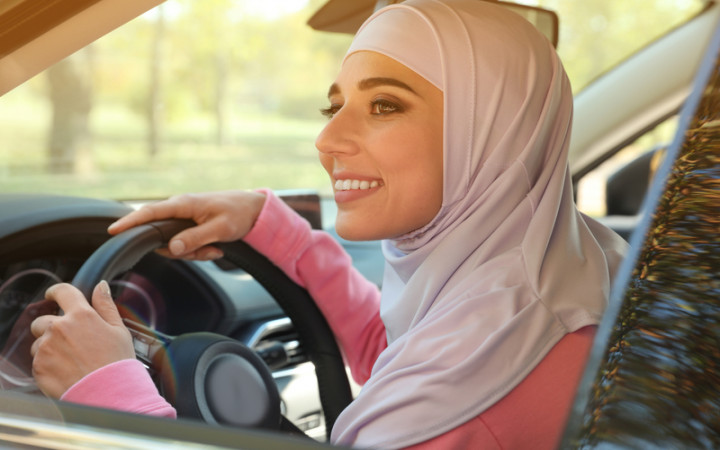Today’s Wonder of the Day was inspired by Sumayya. Sumayya Wonders, “why do muslim wear hijab ?” Thanks for WONDERing with us, Sumayya!
Do you have a favorite piece of clothing? For most people, clothing choices are part of how they express themselves to the world. Some people wear shirts that represent their favorite bands. Others don hats or jackets that have special meaning to them.
Often, clothing choices reflect the cultures people belong to. If you live in India or Sri Lanka, you might wear a sari. In Japan, you might wear a kimono for special occasions. Christian people often wear crosses as jewelry. If you’re Jewish and a boy, you probably wear a kippah in the synagogue. Today’s Wonder of the Day is about another piece of religious covering—the hijab.
What is a hijab? It’s a type of covering worn by many Muslim women. Most often, it is a scarf or shawl. It usually covers a woman’s hair, neck, and shoulders. The hijab is very special to many Muslim women. It represents modesty, privacy, and morality.
Do all Muslim women wear a hijab? No. However, in some places—including Iran and the Aceh Province of Indonesia—the hijab is required by law. But, in most places, it is a matter of custom and women choose whether to wear a hijab. Most often, Muslim women decide whether to wear a hijab in their teenage years.
When did the practice of wearing a hijab start? It goes all the way back to Muhammad, Islam’s most important prophet. Muhammad asked his wives to wear hijabs to set them apart from others. It was meant to indicate their special status.
Muslim women choose to wear a hijab for many reasons. Some see it as a sign of passage into adulthood. Others wear the hijab to identify themselves as Muslim and show cultural pride. Many also wear the covering to value family traditions or local customs. Of course, many Muslim women choose not to wear a hijab. Others choose to only wear it for religious occasions.
The hijab has often been misunderstood by people outside of Islam. Some people think that Muslim women are forced to wear it. Others are confused about the hijab’s meaning and have called for it to be banned. However, as more people learn about the hijab and about Islam, acceptance and understanding continue to spread.
Today, many women in the public eye wear a hijab. One example is Malala Yousafzai, winner of the 2014 Nobel Peace Prize. In entertainment, you’ll see baker Nadiya Hussain and model Halima Aden donning hijabs, as well. Where else have you seen women wearing hijabs? What other examples of cultural clothing can you think of?
Standards: CCRA.L.3, CCRA.L.6, CCRA.R.1, CCRA.R.2, CCRA.R.4, CCRA.R.10, CCRA.SL.1, CCRA.W.7




